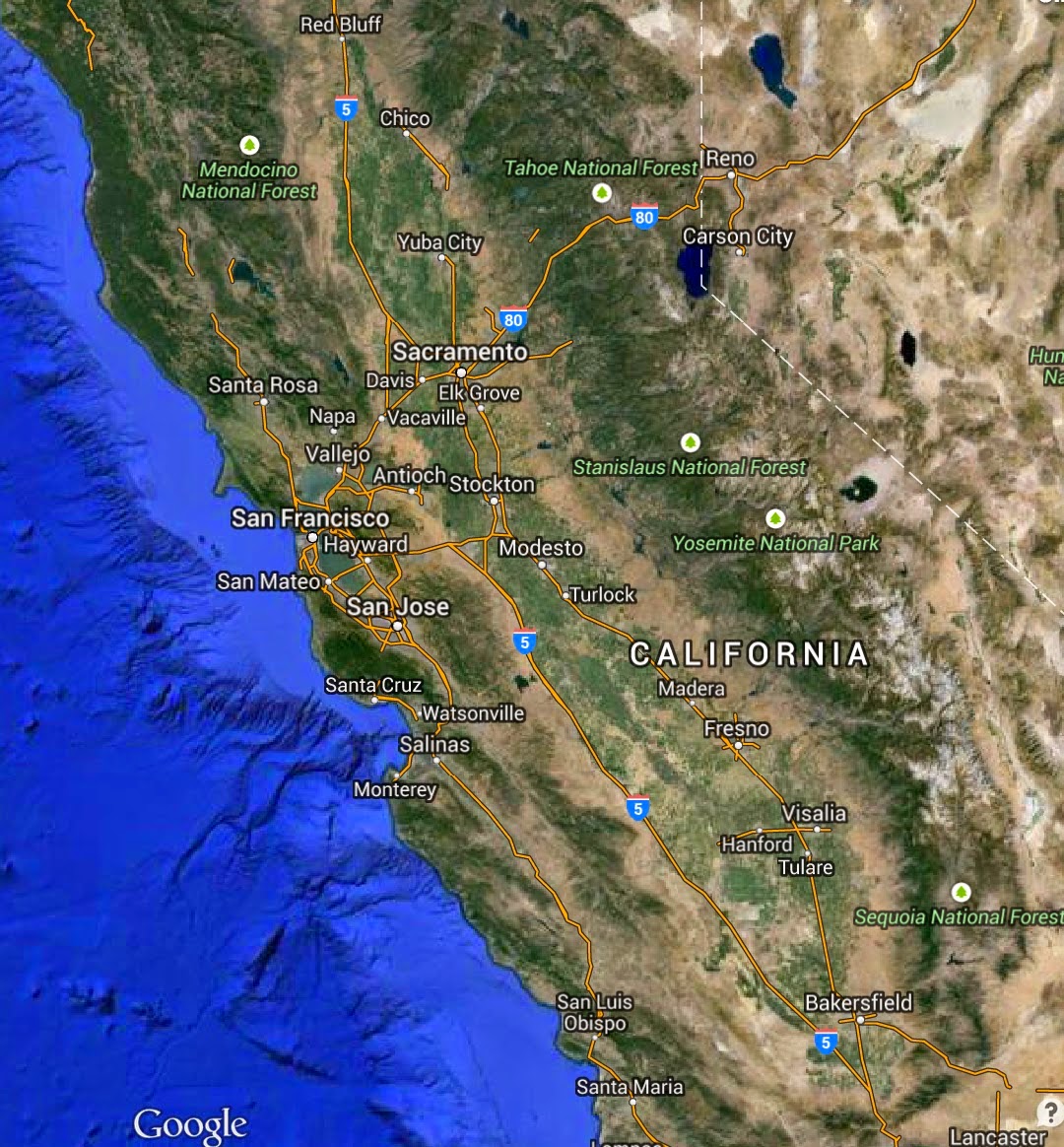Have humans already changed the climate of our planet?
The answer is emphatically yes.
The media talks about this issue all the time, but they almost entirely talk about the impacts of greenhouse gases such as CO2.
But there is far more human-induced climate change than that, and these changes are ones that folks from all political leanings can agree upon. And the magnitude of such changes may surprise you.
Cooling Due to Irrigation
Large areas of the earth's surface are being irrigated for agriculture. Such irrigation inevitably causes substantial surface cooling, particularly in summer, due to evaporation from the wet ground and from plants. During the day, a substantial proportion of the sun's rays reaching the surface are used to evaporate water.
Want some examples? Consider the HUGE irrigated region of the Central Valley of California (a semi-arid region), which is obvious from the green coloring in this satellite image.
Of the large irrigated areas of eastern Washington.
But why stop there? There are huge swaths of land around the world that are being irrigated (see map)
Irrigation can cool the land surface down several degrees centigrade (2-5F) during the day. We have even tried turning eastern Washington back to desert in our local weather simulations and the result was substantial warming for the irrigated regions (3-5F). There have been a number of studies of the effects of irrigation on surface temperature, with several of them noting the the irrigation cooling counterbalanced greenhouse warming in places like the Central Valley of CA (e.g., reference).
Heat Island Effects in Urban Areas
There has been substantial warming in our urban areas, particularly at night. This is often called the urban heat island effect. First, urban areas are not as moist, thus there is less evaporation during the day. Concrete, stone, and asphalt absorb, store, and release solar warmth. Combustion for heating and transportation release lots of heat. The result? Urban areas can be 2-10F warmer than nearby rural regions.
Here is documentation of the heat island for the minimum temperatures around London for mid-May of one year. 5C or 9F warmer in the central city. Seattle also has a heat island, with the warmest temperatures often around Boeing Field. One time I drove around central Puget Sound with thermometers (helped by lots of students)....it was 15F cooler in Woodinville than downtown Seattle.
The climates of major cities throughout the world have been substantially warmed by such urbanization at the surface; this effect is as large as that produced by human greenhouse gas emission and in the same direction....warming.
Changes in Clouds
The cloud distributions on our planet have been substantially modified by our species. For example, over the Pacific (and other locations with low stratus/stratocumulus clouds) one frequently sees strange cloud lines, often called ship tracks. Here is an example:
These ship tracks are caused by combustion products from ship acting as cloud condensation nuclei, increasing the number of cloud droplets, and thus producing whiter clouds.
And then there are contrails, the lines of high clouds behind high flying aircraft. There are a LOT of contrails and they have substantially changed the climatology of upper level cloudiness around our planet. Here is an example from the surface:
And another from space.
These are only a few examples of high mankind is changing the climate of our planet, and I am not even breaking a sweat---there are many more. Greenhouse gas emissions are important, but we are doing a lot more to the climate of the planet that rarely gets on the media radar screen.
The European social model is a common vision many European states have for a society that combines economic growth with high living standards and good ...
Subscribe to:
Post Comments (Atom)


















No comments:
Post a Comment